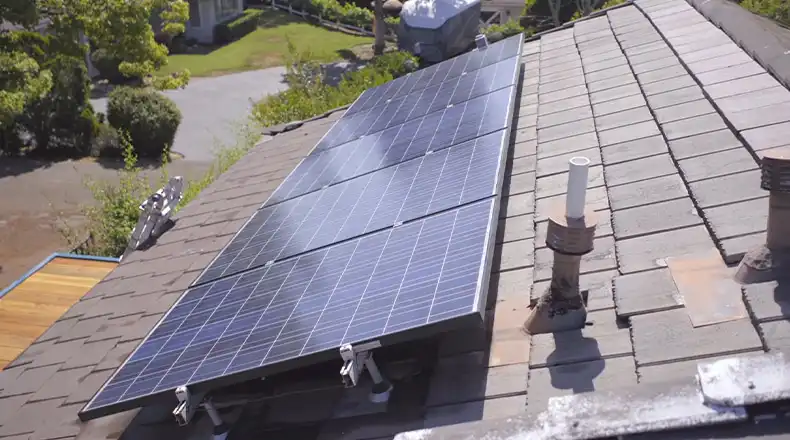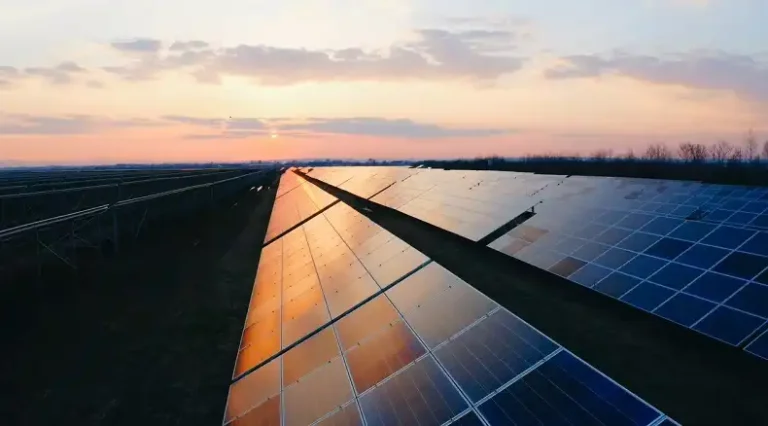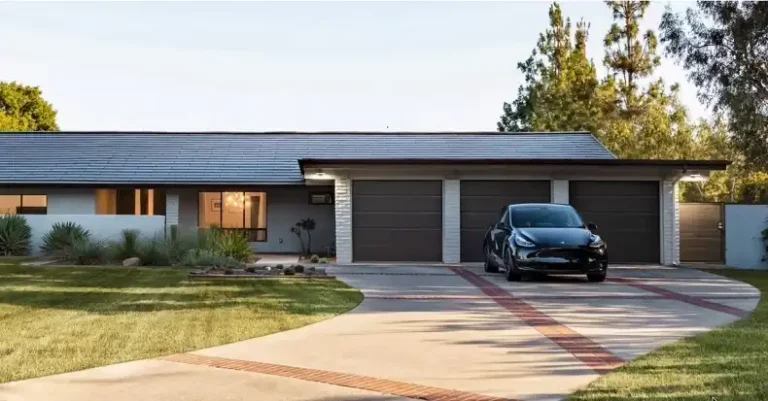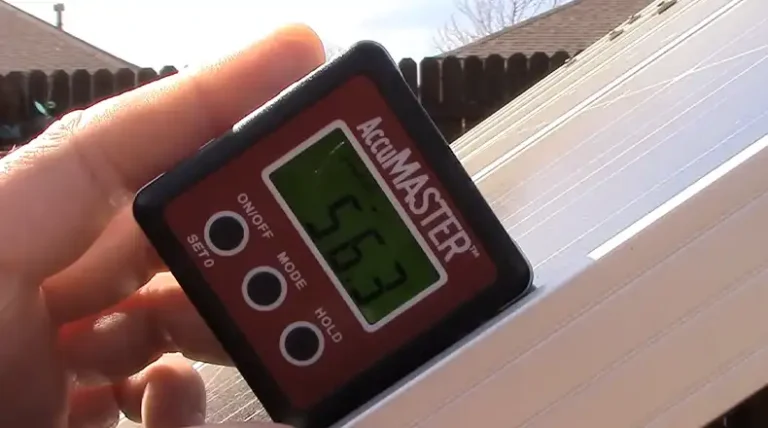Are Solar Panels Too Heavy for Roofs?
“I’m interested in solar panels but aren’t they really heavy? Will all that extra weight damage my roof?” This is a common concern for homeowners considering solar installations.
Before you swap your shingles for solar, here’s a straightforward answer: no, solar panels are not too heavy for the roof.
Let’s examine typical solar panel weight, roof load capacities, and how to ensure your roof can support photovoltaic arrays.

How Much Do Solar Panels Weigh?
Despite their large size, most solar panels are remarkably lightweight, weighing just 2 to 4 pounds per square foot (1-2 kg/m2) when fixed to rooftops or ground mounts. For comparison, a medium-sized pineapple weighs over 2 lbs!
For a more granular view, the table below breaks down the weight of panels from various brands and sizes:
| Solar Panel Brand & Size | Total Weight of Panel | Weight per Sq. Ft. |
| AXITEC Solar 60-Cell | 40.8 pounds | 2.28 pounds |
| AXITEC Solar 72-Cell | 51.8 pounds | 2.39 pounds |
| Q-Cells 60-Cell | 43.9 pounds | 2.27 pounds |
| Q-Cells 72-Cell | 51.8 pounds | 2.39 pounds |
| LG Solar 60-Cell | 38.6 pounds | 2.08 pounds |
| LG Solar 72-Cell | 44.8 pounds | 2.01 pounds |
So while a complete array covers a large area, it adds little load per unit area. Distributed weight minimizes roof impact.
What is Roof Load Capacity?
Roof load refers to the maximum weight a roof can safely hold per square foot/meter before structural damage or collapse occurs. Standard building codes require roofs to withstand:
- Dead Loads: Weight of permanent roofing and structural materials. For an asphalt shingle roof, this is around 10-15 lbs per square foot.
- Live Loads: Weight of temporary items added, like workers, furniture, or environmental loads such as rain and snow. Roofs require 20+ lbs per square foot live load capacity.
- Total Load Capacity: Most rooftops can handle 35 lbs per square foot or more. Higher for snowy regions.
As you can see, a typical 2-4 lbs per square foot solar array is well within normal roof load allowances. But always verify your specific roof capacity.
How to Figure Out If Your Roof Can Handle Solar Panels
Determining if solar panels overload your roof involves:
- Calculate Solar Panel Weight: Determine the weight of your chosen solar panels and accompanying mounting equipment. Here is the formula:
Total Solar Array Weight = Panel and racking weight x total roof coverage area.
- Estimate Current Roof Loads: Check if live loads are already present with the dead load of your roof.
- Verifying Load Limits Not Exceeded: Match the load requirements of solar panels to your roof’s load capacity. You must have to follow this equation:
Existing + new solar load < roof max load capacity.
For example, if you have a roof with a total load capacity of 100 pounds per square foot and your solar array weighs 60 pounds per square foot, you have 40 pounds of capacity left. But if your solar panel weight is beyond 100 pounds, then you may need to consider other options.
If the limit is exceeded, adjustments may distribute the solar array across roof segments within acceptable individual loads. Most roofs can easily handle solar with the capacity to spare.
What If Your Panels Are Too Heavy?
If your desired solar array does overload the roof structure, alternatives exist besides reducing panel area:
- Reinforce Rafters – Sistering new rafters alongside existing ones strengthens load capacity. Consult with a structural engineer if necessary.
- Adjust Panel Positioning – Optimize using fewer panels or the placement and orientation of panels to distribute weight more evenly.
- Use Ballasted Racks – Ground or ballasted racking sets panels near roof level without roof attachment. You can explore alternative mounting systems that distribute weight effectively.
- Install Pole Mounts – Freestanding pole mounts secured in the ground hold solar panels.
With smart structural improvements and solar mounting solutions, most homes can implement solar power without issue.
Wrap Up
Solar panels and roofs can coexist harmoniously. By understanding the weight dynamics, assessing your roof’s load capacity, and taking proactive measures if needed, you can seamlessly transition to a solar-powered haven. Thank you for joining us on this enlightening journey. Now, go forth, embrace solar, and let your rooftop bask in the glory of sustainable energy. Have questions or lingering doubts? Drop them in the comments below – we’re here to illuminate your path to solar brilliance!
Are Solar Panels Too Heavy for Roofs – FAQs
How much weight can solar panels hold?
Properly mounted solar arrays can sustain very high loads – wind tunnels test to 5400 pascals (113 mph winds) and 30 pounds per square foot loads. Wind and snow typically exert greater forces than panel weight.
How heavy is a solar panel in kilograms?
A typical 60 to 80-cell crystalline silicon solar panel weighs between 15-25 kg or 35-55 pounds. Larger utility-scale panels may reach 50 kg. This distributed weight is manageable for roof structures.
How much weight can a typical residential roof hold?
Most residential rooftops can support 35-50 pounds per square foot when evenly distributed across multiple rafters and roof planes. Higher for heavy snow load designs.
Do solar panels need to be distributed evenly across the entire roof?
While balanced panel placement is ideal, load concentrations on different roof planes are allowed as long as the area-adjusted weights do not exceed rafter limits.






